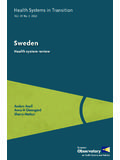Transcription of DENTAL DISEASES AND ORAL HEALTH - WHO | World Health ...
1 DENTAL DISEASES AND oral HEALTHD ental DISEASES are the most prevalent chronic diseasesworldwide, and a costly burden to HEALTH care services. Thetreatment of DENTAL DISEASES is expensive, accounting forbetween 5% and 10% of total HEALTH care expenditures inindustrialized countries. In most developing low-incomecountries, the prevalence rate of DENTAL caries is high andmore than 90% of caries is untreated. An estimated 5 billionpeople worldwide suffer from DENTAL caries (tooth decay).Nutrition affects the teeth and growth of the jaw duringdevelopment. While malnutrition may exacerbate periodontal and oral infectious DISEASES , the most significant effect of nutrition is the local action of diet inthe mouth, particularly in the development of DENTAL cariesand enamel erosion. DENTAL caries is largely caused by sugars. DENTAL erosion is associated with dietary acids, amajor source of which is soft typical soft drink maycontain the equivalent of up to 20 teaspoons of a low mortality rate associated with DENTAL DISEASES ,they have a considerable impact on self-esteem, eating ability, nutrition and HEALTH both in childhood and older IS THIS HAPPENING?
2 oral HEALTH is related to diet in several ways, for example,nutritional influences on cranio-facial development and salivaryglands, oral cancer and oral infectious DISEASES . Diet plays animportant role in DENTAL caries, a major cause of tooth also plays a significant role in DENTAL erosion, a conditionwhich seems to be becoming more prevalent components may also contribute to development ofenamel defects. Periodontal disease , another cause of toothloss in adults, is largely related to the use of tobacco. oral cancer is also largely caused by the use of tobacco (smokingand chewing), as well as excessive use of is convincing evidence, collectively from human intervention studies, epidemiological studies, animal studiesand experimental studies, for an association between theamount and frequency of free sugars intake and DENTAL status affects teeth pre-eruptively, though this ismuch less important than the post-eruptive local effect ofdiet.
3 Undernutition, coupled with a high intake of sugars, mayexacerbate DENTAL DISEASED ental DISEASES include DENTAL caries, developmentaldefects of enamel, DENTAL erosion and periodontal cariesDental caries occurs due to demineralization of enamel anddentine (the hard tissues of the teeth) by organic acidsformed by bacteria in DENTAL process is due tothe anaerobic metabolism of sugars derived from the sugars or other fermentable carbohydrates areingested, the resulting fall in DENTAL plaque pH caused byorganic acids increases the solubility of the DENTAL hard tissues and demineralization occurs as calcium is lost. Thedevelopment of caries requires sugars and bacteria to occur,but is influenced by the susceptibility of the tooth, the bacterial profile, quantity and quality of the saliva, low levelsof fluoride, and the time for which fermentable dietary carbohydrates are available for bacterial fermentation ( frequency of sugar intake).
4 DENTAL erosionDental erosion is the progressive irreversible loss of dentalhard tissue that is chemically etched away from the toothsurface by dietary extrinsic and/or intrinsic acids. Erosion isoften associated with other forms of tooth wear such asabrasion and attrition (from overzealous oral hygiene,work-related exposure to industrial inorganic dust, andgrinding of teeth, for example). Poor salivary flow or salivary deficiencies are thought to make some individualsmore susceptible. Erosion reduces the size of the teeth andin severe cases leads to total tooth HEALTH ORGANIZATIONGLOBAL STRATEGY ON DIET, PHYSICAL ACTIVITY AND HEALTHFACTS: DENTAL DISEASES are the most prevalent globally; an estimated 5 billion people suffer from tooth decay DENTAL disease treatment accounts for between 5% and 10% of total HEALTH care costs in industrialized countries More than 40% of older people in Albania, Bosnia & Herzogovina, Bulgaria, Canada, Finland,Malaysia and the UK, suffer from total tooth DISEASES AND oral HEALTH WHO 2003 Periodontal diseasePeriodontal disease mostly becomes apparent in middle from severe vitamin C deficiency, which results inscurvy-related periodontitis, there is less evidence of an association between diet and periodontal disease .
5 The main overriding factor is the presence of plaque, and the use EXTENT OF THE PROBLEMD espite improved trends in levels of DENTAL caries in developedcountries, the disease remains prevalent and is increasing insome developing countries undergoing nutrition transition,with limited exposure to fluorides. Within most countries,geographical and social factors influence the occurrence ofdental caries and, despite improvements, caries continues toaffect the majority of children, some severely. DENTAL caries isthe most common DENTAL disease in children and contributesto tooth loss in most developing low-income countries DENTAL cariesprevalence is severe as more than 90% is untreated. Thelevel of caries is higher for the primary dentition than thepermanent dentition for children of several developingcountries in Asia and Africa, as shown by recent studies forChina, Thailand, Madagascar and Niger.
6 Available data showthat the mean number of permanent teeth affected by DENTAL caries (DMFT) in populations at age 12 years of low-income countries is compared with DMFT formiddle income countries and DMFT for high-incomecountries. (dmft/DMFT is a count of the number of teeth ina person s mouth that are decayed, filled or missing, widelyused to indicate the prevalence of DENTAL caries and theseverity of DENTAL caries in primary teeth (dmft) or permanentteeth (DMFT). DENTAL DISEASES have a detrimental effect on quality of life bothin childhood and older age. The second WHO InternationalCollaborative Study of oral HEALTH Systems (ICSII) revealedthat in all countries covered by the survey, substantial numbersof children and adults reported impaired social functioning dueto oral disease , such as avoiding laughing or smiling due topoor perceived appearance of decay also results in tooth loss, which reduces theability to eat a varied diet.)
7 It is in particular associated witha diet low in fruits, vegetables and non-starch polysaccha-rides (NSP), and with a low plasma vitamin C level. NSPintakes of less than 10g per day and fruit and vegetableintakes of less that 160g per day have been reported in astudy of edentulous people ( , with no teeth at all).Toothloss may therefore impede the achievement of dietary goalsrelated to the consumption of fruits, vegetables and CAN WE DO ABOUT IT?In low-income countries, the cost oftraditional restorative treatment ofdental disease is large financial benefitsof preventing DENTAL DISEASES shouldbe emphasized. It is important thatcountries with a low intake of freesugars do not increase intake, as the available evidence shows that whenfree sugars consumption is < 15-20kg/year (~6-10% energy intake), DENTAL caries is low. Other countries should aim towards amaximum of 10% of total calorie intake per day in free addition, the frequency of consumption of foods containingfree sugars should be limited to a maximum of four times perday and adequate exposure to fluoride should be ON THE YOUNGE ffective prevention should focus in particular on youngpeople.
8 Needed actions include: Promoting healthy nutrition and oral hygiene practices through school HEALTH programmes. Providing nutritionally sound school lunches, which factorin the protective factors in milk and cheese. Banning soft drink and snack vending machines, and the sale of sweets and unhealthy foods inside or just outsideschool premises. Discourage linkages between sports and soft drinks. Promoting pre-natal good nutrition and breastfeeding forat least six months. Encouraging caregivers to support healthy dietary habitsin children and the DISEASES AND oral HEALTHDR P. PUSKAW orld HEALTH OrganizationTel:+41-22-791 4703 Fax:+41-22-791 4186 Email: D. PORTERW orld HEALTH OrganizationTel:+41-22-791 3774 Fax:+41-22-791 4186 Email: PETERSEN World HEALTH OrganizationTel:+41-22-791 3475 Fax:+41-22-791 4866 Email: CONTACTSCHANGING LEVELS OF DENTAL CARIES EXPERIENCE (DMFT) AMONG 12 YEAR-OLDS IN DEVELOPED AND DEVELOPING COUNTRIESDMFT543211980198419861989 1990 199119980 DEVELOPED COUNTRIESALL COUNTRIESDEVELOPING COUNTRIES WHO 2003


















